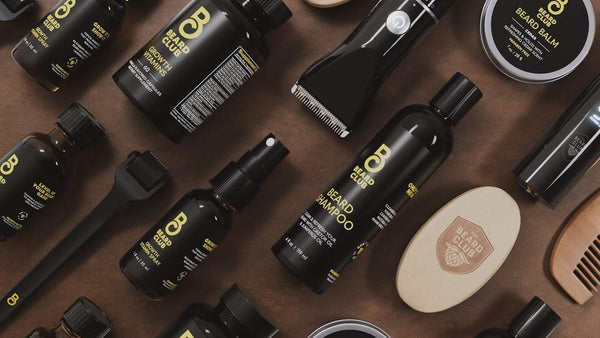How to Set Up Facebook Pixel with Shopify: A Comprehensive Guide
Table of Contents
- Introduction
- What is the Facebook Pixel?
- Step-by-Step Guide to Setting Up Facebook Pixel with Shopify
- Understanding Data Sharing Levels
- Utilizing the Facebook Pixel for Maximum Impact
- Conclusion
- FAQ
Introduction
Did you know that businesses that utilize the Facebook Pixel see an average increase of 50% in their return on ad spend? If you’re an ecommerce professional looking to enhance your marketing strategies, integrating the Facebook Pixel into your Shopify store is a crucial step. This powerful analytics tool not only helps track customer interactions but also optimizes ad performance, making it an essential component of any effective digital marketing strategy.
In today’s fast-paced digital landscape, understanding consumer behavior is paramount. With the right tools, we can gather invaluable insights that drive our marketing efforts and ultimately boost sales. By the end of this post, you will learn how to set up Facebook Pixel with Shopify, explore its functionalities, and understand how to leverage this integration for maximum impact on your business.
We’ll delve into the setup process, the data-sharing preferences, and the various benefits that come with using the Facebook Pixel. This guide aims to provide you with actionable insights to optimize your ecommerce strategy and drive growth. Let’s get started!
What is the Facebook Pixel?
The Facebook Pixel, now known as the Meta Pixel, is a piece of code that you place on your website. It allows you to measure the effectiveness of your advertising by tracking the actions users take on your site. This includes actions like page views, purchases, and sign-ups. The data collected through the Facebook Pixel enables you to refine your ad targeting, optimize your campaigns, and ultimately increase your return on investment (ROI).
Key Benefits of Using the Facebook Pixel
-
Enhanced Ad Targeting: By tracking user behavior, the Pixel helps you create custom audiences, allowing you to retarget visitors who didn’t complete a purchase or engage with your content.
-
Improved Conversion Tracking: You can see which ads are driving traffic to your site and how effective they are in converting visitors into customers.
-
Dynamic Ads: The Pixel allows you to create dynamic ads that show personalized product recommendations based on user behavior.
-
Lookalike Audiences: With the insights gathered, you can create lookalike audiences to reach potential customers similar to your existing ones.
-
Data-Driven Decision Making: The Pixel provides valuable data that informs your marketing strategies, ensuring you make informed decisions.
These benefits demonstrate how crucial it is for ecommerce brands to effectively integrate the Facebook Pixel into their operations.
Step-by-Step Guide to Setting Up Facebook Pixel with Shopify
Setting up the Facebook Pixel with Shopify is a straightforward process, but it requires attention to detail to ensure everything functions correctly. Here’s how we can do it:
Step 1: Create Your Facebook Pixel
-
Login to Facebook Events Manager: Navigate to your Facebook Business account and access the Events Manager.
-
Create a Pixel: Click on “Connect Data Sources” and select “Web.” Choose “Facebook Pixel” and click “Connect.”
-
Name Your Pixel: Give your pixel a name that reflects your business or its purpose.
-
Enter Your Website URL: Input your Shopify store URL. This allows Facebook to check for integration options.
-
Choose Your Integration Method: Select the option to set up using a partner (Shopify) for a streamlined process.
Step 2: Connect Shopify with Facebook
-
Add Facebook Sales Channel: From your Shopify admin, go to Settings > Apps and sales channels. Click on Facebook.
-
Open the Sales Channel: Click Open Sales Channel, which will take you to the Facebook setup page.
-
Set Up Data Sharing: Under the Data Sharing Settings section, you need to enable data sharing. Choose the sharing level that suits your needs: Standard, Enhanced, or Maximum.
Step 3: Add Your Facebook Pixel to Shopify
-
Select Your Pixel: Once data sharing is enabled, you will see a list of your available pixels. Choose the pixel you created earlier.
-
Confirm Your Selection: Click Confirm to link your pixel to your Shopify store.
-
Check Data Sharing Preferences: Make sure to choose the data-sharing level you desire. The Enhanced or Maximum settings allow for more detailed tracking.
Step 4: Verify Your Pixel Installation
-
Use the Facebook Pixel Helper: Install the Facebook Pixel Helper browser extension to check if your pixel is firing correctly on your site.
-
Test Events: Go back to the Events Manager and check for any recorded actions to ensure the pixel is tracking correctly.
-
Monitor Performance: After setting up, it may take some time for data to populate. Monitor your pixel performance in the Events Manager to see how it’s tracking user interactions.
Understanding Data Sharing Levels
When setting up your Facebook Pixel, it’s important to understand the various data-sharing levels available:
- Standard: Basic tracking of user behavior on your site.
- Enhanced: Additional data, including customer details like name and email, which can improve ad targeting.
- Maximum: Comprehensive data sharing that provides the most insights for ad optimization.
Choosing the right level depends on your business needs and how you intend to use the data collected by the Pixel.
Utilizing the Facebook Pixel for Maximum Impact
Once your Facebook Pixel is set up and tracking successfully, it's time to leverage the data for strategic advantage.
Creating Custom Audiences
With the data collected, we can create custom audiences based on user behavior. This allows us to retarget users who visited specific pages or took particular actions. For instance:
-
Retargeting Cart Abandoners: Use the pixel to retarget customers who added items to their cart but did not complete the purchase. Create ads that remind them of what they left behind.
-
Segmenting Audiences: Group users based on actions taken on your site. Those who viewed product pages but didn’t purchase can be targeted with ads showcasing similar products.
Tracking Conversions
By setting up standard and custom events, we can accurately track conversions on our Shopify store. This includes:
- Purchases: Track when a customer completes a purchase.
- Sign-ups: Monitor when users sign up for newsletters or create accounts.
- Page Views: Understand which product pages are most engaging.
This data is crucial for analyzing the effectiveness of our Facebook ad campaigns and making necessary adjustments.
Dynamic Ads
Dynamic ads are a powerful feature enabled by the Facebook Pixel. They allow us to automatically show the right products to people who have expressed interest in them. For instance:
- If a customer views a specific item but leaves without purchasing, a dynamic ad can remind them of that item through personalized advertising.
Data-Driven Campaign Adjustments
With insights from the Facebook Pixel, we can continually optimize our ad campaigns. For example:
-
A/B Testing: Use the data to test different creatives, ad placements, and targeting strategies. Analyze which combinations yield the best results.
-
Identifying Drop-off Points: If a significant number of users are bouncing at a specific stage of the purchase process, we can adjust our landing pages or ad messaging to address potential issues.
Conclusion
Integrating the Facebook Pixel with your Shopify store is a powerful step towards optimizing your ecommerce strategy. By accurately tracking user behavior and leveraging the insights gained, we can refine our marketing efforts, enhance ad targeting, and ultimately drive conversions.
As we have explored, setting up the Facebook Pixel is not just about installation; it's about understanding how to utilize the data collected to inform our marketing strategies. The insights gained can help us create custom audiences, track conversions, and run dynamic ads tailored to our customers’ behaviors.
To take your ecommerce success to the next level, consider exploring the PowerCommerce eStore Suite, which offers a comprehensive range of tools designed to enhance your online business performance. Learn more about our solutions here.
FAQ
1. How do I know if my Facebook Pixel is working?
You can use the Facebook Pixel Helper browser extension to verify that your pixel is firing correctly on your site. Additionally, check the Events Manager in your Facebook Business account for recorded actions.
2. Can I set up multiple Facebook Pixels?
Yes, you can create and manage multiple Facebook Pixels within your Business Manager, but ensure you track events accurately to avoid duplicate data.
3. How does the Facebook Pixel improve my ad performance?
The Facebook Pixel provides insights into user behavior, allows for better targeting of ads, and helps create custom and lookalike audiences, all of which contribute to improved ad performance.
4. What happens if I change my Shopify theme?
If you change your Shopify theme, ensure that the Facebook Pixel code is still correctly integrated. You may need to re-verify the installation using the Facebook Pixel Helper.
5. Is there a cost associated with using the Facebook Pixel?
No, the Facebook Pixel itself is free. However, running Facebook ads incurs costs based on your advertising budget and strategy.
By following these guidelines, we can ensure that our Shopify store is set up for success, leveraging the power of the Facebook Pixel to drive growth and conversion.
POWER your ecommerce with our weekly insights and updates!
Stay aligned on what's happening in the commerce world
Email Address
Handpicked for You
21 March 2025 / Blog
How to Use Shopify Themes: A Comprehensive Guide for E-commerce Success
Read more21 March 2025 / Blog
How to Find SKU on DSers: A Comprehensive Guide for E-commerce Professionals
Read more21 March 2025 / Blog


